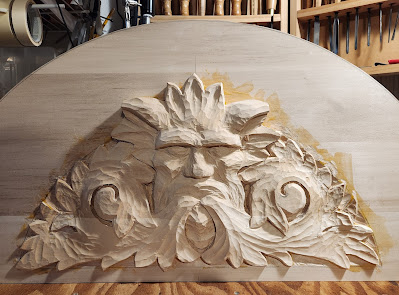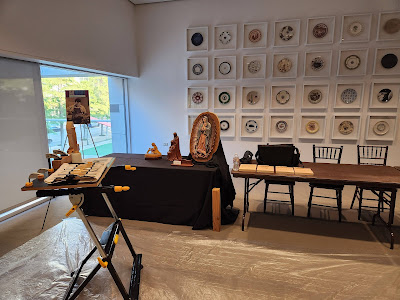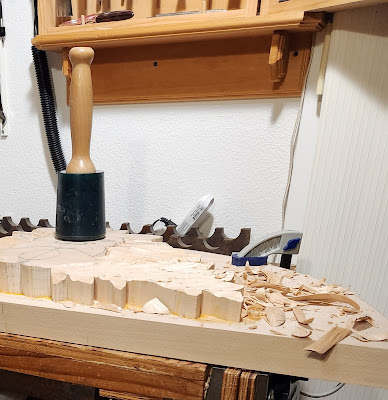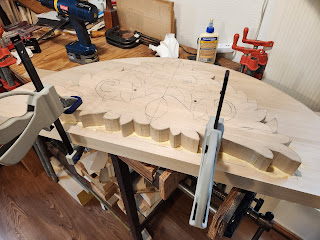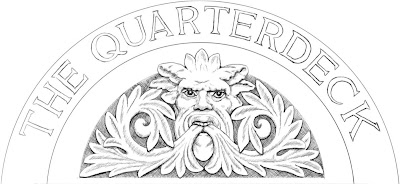With all the carving done the Christus Rex needs to be finished. This process involves a lot of step which we will look at with the photos below. The carving is sealed with three coats of Enduro-Var. Enduro-Var is a water based finish that seals, strengthens and provide a slightly amber color to the basswood. After the coats of Enduro-Var, the hands are glued in, and the carving is ready to be painted. The color we see here will provide the base color for the face, hands, and feet. Multiple coats of white acrylic are added for the alb and the whites of the eyes. The base brown color for the hair is then applied. Each color needs to dry before the next color goes on to avoid unnecessary blending. Multiple coats of blue and are used for the chasuble and stole. Gold then goes on for the crown, halo, chasuble, and stole. A very faint touch of red is added to the face to give it a more lifelike appearance and a slightly lighter brown is dry brushed on the ha...
